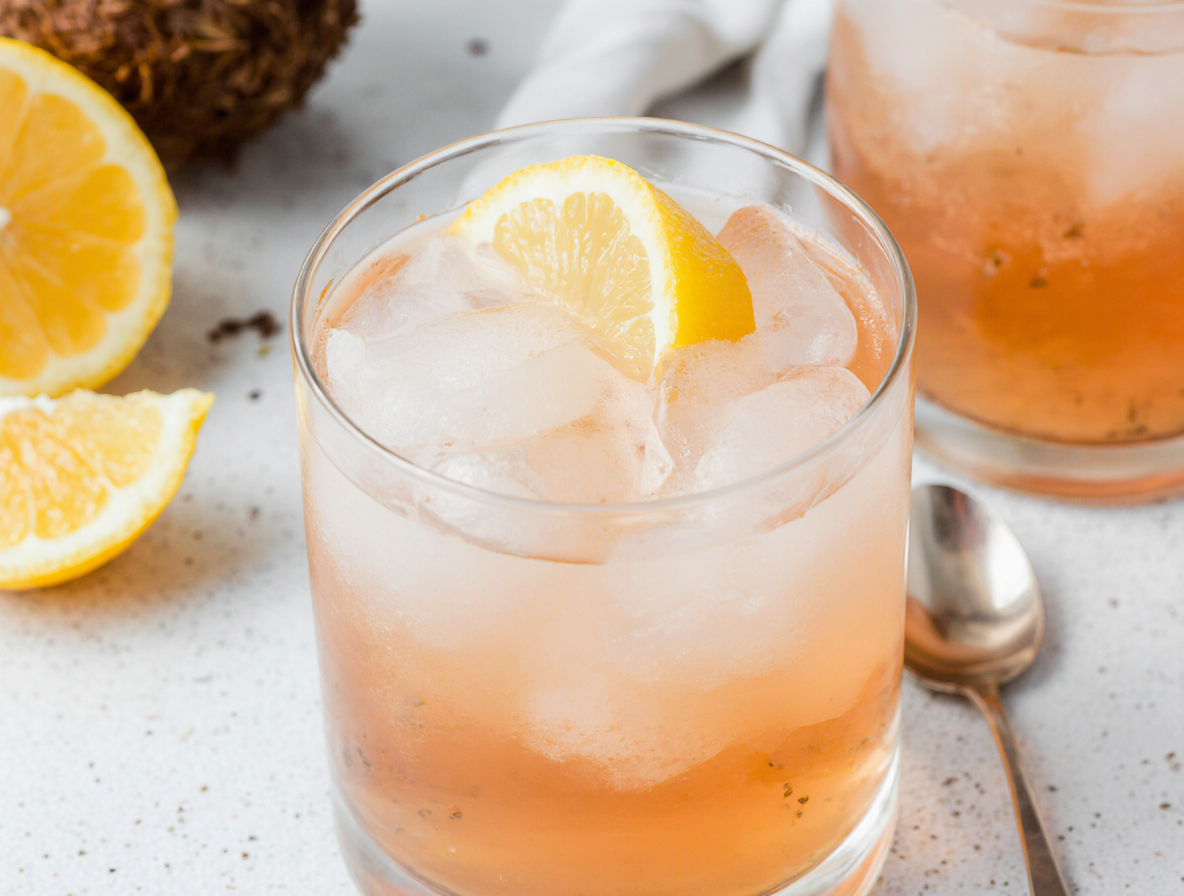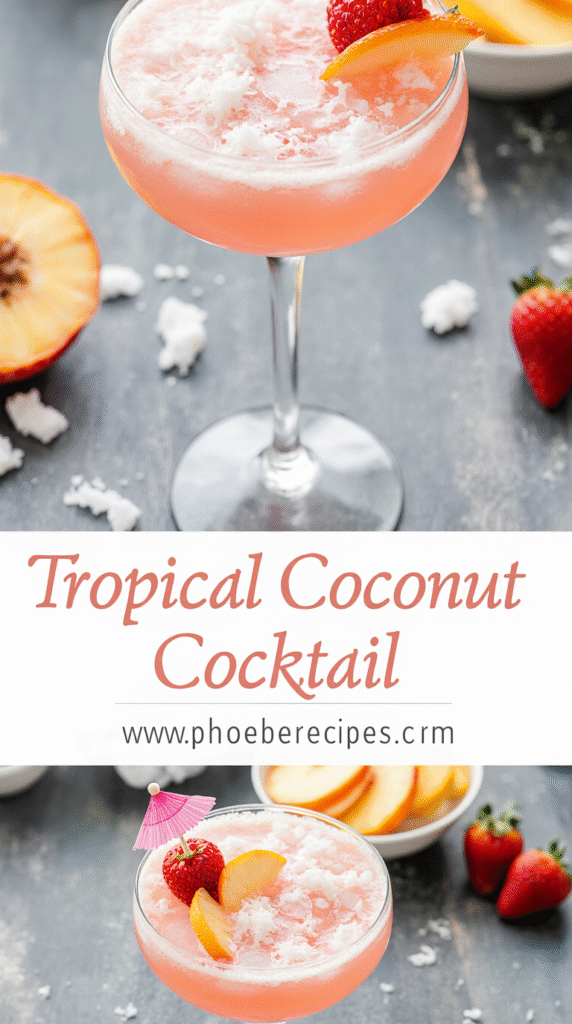The Perfect Frosé Recipe: Tropical Coconut Paradise in a Glass
Frosé recipe enthusiasts, rejoice! If you haven’t discovered this delightful frozen concoction yet, I’m about to change your summer drink game forever. First invented in 2016 at Bar Primi in NYC, frosé is actually nothing more complicated than a frozen rosé slushie – yet it’s everything your warm-weather gatherings have been missing.
Whether you’re hosting a backyard barbecue or simply unwinding after a long day, this Tropical Coconut Frosé cocktail recipe combines fruity flavors, coconut rum, and crisp notes of rosé wine to create paradise in a glass. In fact, this easy frosé recipe yields about 4 cups, making it perfect for sharing with friends. Though most traditional frosé recipes contain strawberries and rose, our tropical twist offers a refreshing alternative that’s both impressive and simple to make.
What Makes a Frosé Truly Tropical
The tropical twist on a traditional frosé elevates this refreshing drink from simple frozen wine to an exotic vacation in a glass. Creating that authentic tropical experience relies on a few key elements that work harmoniously together.
Selecting the right rosé forms the foundation of any successful frosé recipe. For a truly tropical version, choose a full-flavored, full-bodied, dark-colored rosé that can withstand freezing and blending without losing its character. Since the freezing process dilutes some of the wine’s flavor and color, starting with a bold rosé (such as a Pinot Noir or Merlot rosé) ensures your final drink remains vibrant and flavorful.
Tropical fruits are essential for transforming an ordinary frosé into an island-inspired delight. The best combinations include frozen mango and strawberries, although many recipes incorporate additional fruits like peaches or even a pre-mixed tropical fruit blend. These frozen fruits not only add flavor but also contribute to the slushy texture without watering down your drink.
Nevertheless, what truly distinguishes a tropical frosé is the addition of coconut elements. Cream of coconut brings sweetness and that unmistakable tropical essence, while coconut milk adds natural fat and creaminess. Some recipes even use frozen young coconut for an authentic taste.
Furthermore, citrus components balance the sweetness and add brightness. Lime juice features prominently in many tropical frosé recipes, cutting through the richness of the coconut and complementing the fruit flavors perfectly.
Regarding the alcohol base, although rosé wine serves as the primary ingredient, you can enhance the tropical profile by adding white rum or vodka for an extra boozy kick. Additionally, you might consider freezing your rosé in ice cube trays beforehand to maintain the perfect slushy consistency.
Overall, the beauty of a tropical frosé lies in its versatility. You can adjust the thickness to your preference—some enjoy it with smoothie-like consistency—and experiment with different fruit combinations. This adaptability makes the tropical frosé an ideal canvas for creative summer refreshment.
How to Make the Perfect Tropical Coconut Frosé
Making this delicious tropical coconut frosé is remarkably straightforward, even for novice home bartenders. Let’s dive into creating this refreshing paradise in a glass!
First, select a full-bodied, dark-colored rosé as your base—it will maintain its robust flavor profile despite dilution during the freezing process. Bottles containing syrah or grenache grapes work exceptionally well for this purpose.
For the basic tropical coconut frosé, gather these ingredients:
- 1 bottle (750ml) of your chosen rosé
- 2 cups frozen tropical fruit (mango and pineapple work wonderfully)
- 1-2 ounces of coconut rum
- 1 ounce simple syrup or honey
- Fresh lemon juice (about ¼ cup)
The preparation method varies depending on your time constraints. For immediate enjoyment, simply combine all ingredients in a blender and process until smooth. However, for a more authentic slushy texture, pour the rosé into a shallow baking dish and freeze for approximately 6 hours until almost solid. Remember, due to the alcohol content, it won’t freeze completely.
Meanwhile, prepare your fruit mixture by blending the frozen tropical fruits with simple syrup or honey until smooth. Once your rosé is properly chilled, scrape it into the blender, add your fruit mixture and coconut rum, then blend until you achieve a milkshake-like consistency.
Should you desire a thicker texture, add more frozen fruit rather than ice, which would merely dilute the flavors. Conversely, to thin the mixture, incorporate additional rosé or a splash of coconut water.
For planning ahead, you can prepare this cocktail and store it in the freezer for up to one week in an airtight container. Before serving, allow it to thaw slightly and re-blend for optimal texture.
Garnish with toasted coconut flakes, fresh fruit slices, or even a paper umbrella for that perfect tropical presentation. Given that this mixture maintains its slushy consistency thanks to the alcohol content, you can enjoy it immediately or keep it frozen for later indulgence.
Creative Variations and Serving Ideas
Once you’ve mastered the basic tropical coconut frosé, it’s time to explore exciting variations that will keep your summer drink menu fresh and interesting.
Fruit Fusion Experiments
Beyond the standard strawberry-based frosé, your blender awaits countless fruity alternatives. Swap in frozen blueberries, blackberries, or peaches for completely different flavor profiles. Primarily, tropical fruits like mango and pineapple complement the coconut elements beautifully. For an unexpected twist, watermelon creates a lighter, more refreshing version that’s perfect for poolside sipping.
Sweetener Swaps
Traditional simple syrup works wonderfully, yet alternative sweeteners can transform your frosé’s flavor profile. Essentially, you can substitute agave nectar or honey for a more complex sweetness. If you’re monitoring sugar intake, monk fruit sweetener provides sweetness without the carbs.
Spirited Additions
To create a more potent cocktail, consider adding spirits. A frosé recipe with vodka delivers clean, crisp enhancement—simply add 3-4 ounces when blending. Alternatively, tequila pairs surprisingly well with tropical fruit notes, creating a cocktail that’s somewhere between a frosé and a margarita.
Alcohol-Free Options
For non-alcoholic versions, substitute the rosé with rose lemonade or a non-alcoholic rosé. Many quality NA rosé options now exist, including Gruvi, Surely, and Jøyus. Mix these with frozen fruits for a delightful mocktail everyone can enjoy.
Serving Suggestions
Presentation elevates the best frosé recipe into something spectacular. Serve in wine glasses or coupes for elegant presentation. Garnish options include:
- Edible flowers or rose petals
- Fresh fruit slices on the rim
- Toasted coconut flakes
- A light sprinkle of cinnamon
Perfect Pairings
Frosé’s sweet-tart profile pairs wonderfully with foods that have contrasting flavors. Serve alongside spicy dishes like jerk chicken with mango salsa or Thai coconut curry skewers. The cool, fruity notes beautifully balance heat while the coconut elements create flavor continuity.
For entertaining, prepare batches in advance—one bottle of rosé typically yields 6-7 servings, making it ideal for summer gatherings.
Conclusion
As we’ve seen, tropical coconut frosé transforms the already delightful frozen rosé slushie into an island-inspired treat that’s perfect for hot summer days. This refreshing cocktail certainly elevates ordinary rosé wine into something extraordinary with just a few simple ingredients and minimal effort.
During those sweltering summer afternoons, nothing beats the cool, fruity goodness of this frozen cocktail. The combination of bold rosé, tropical fruits, and coconut elements creates a balanced flavor profile that’s both sophisticated and fun. Additionally, the versatility of this recipe allows you to adjust sweetness, thickness, and alcohol content according to your personal preferences.
Perhaps the best part about this tropical paradise in a glass is how easily you can prepare it ahead of time for gatherings. Simply store it in your freezer and re-blend before serving. This makes entertaining truly effortless while still impressing your guests with a creative, Instagram-worthy cocktail.
Whether you stick with the classic recipe or experiment with different fruit combinations and spirits, tropical coconut frosé promises to be a crowd-pleaser. You might even consider setting up a frosé bar at your next summer party, allowing guests to customize their drinks with various garnishes and mix-ins.
So grab that bottle of rosé sitting in your wine rack, pull out your blender, and treat yourself to this delicious frozen concoction. After all, summer is meant for indulging in cool, refreshing drinks that transport you to a tropical paradise – if only for a few sips!
FAQs
Q1. What is frosé and how is it different from regular rosé? Frosé is a frozen cocktail made with rosé wine, typically blended with fruits and other ingredients to create a slushy texture. Unlike regular rosé, which is served chilled, frosé offers a refreshing, icy twist perfect for hot summer days.
Q2. Can I make frosé without alcohol? Yes, you can create a non-alcoholic version of frosé by substituting the rosé wine with rose lemonade or a non-alcoholic rosé alternative. Mix these with frozen fruits to create a delightful mocktail that everyone can enjoy.
Q3. How long can I store frosé in the freezer? You can prepare frosé in advance and store it in an airtight container in the freezer for up to one week. Before serving, allow it to thaw slightly and re-blend for the best texture.
Q4. What are some creative garnishes for tropical coconut frosé? Some impressive garnish ideas for tropical coconut frosé include edible flowers, fresh fruit slices on the rim, toasted coconut flakes, or even a light sprinkle of cinnamon. These additions can elevate the presentation and add extra flavor to your drink.
Q5. What type of rosé works best for making frosé? For the best frosé, choose a full-bodied, dark-colored rosé wine. Bottles containing syrah or grenache grapes work exceptionally well as they maintain their robust flavor profile despite dilution during the freezing process.


